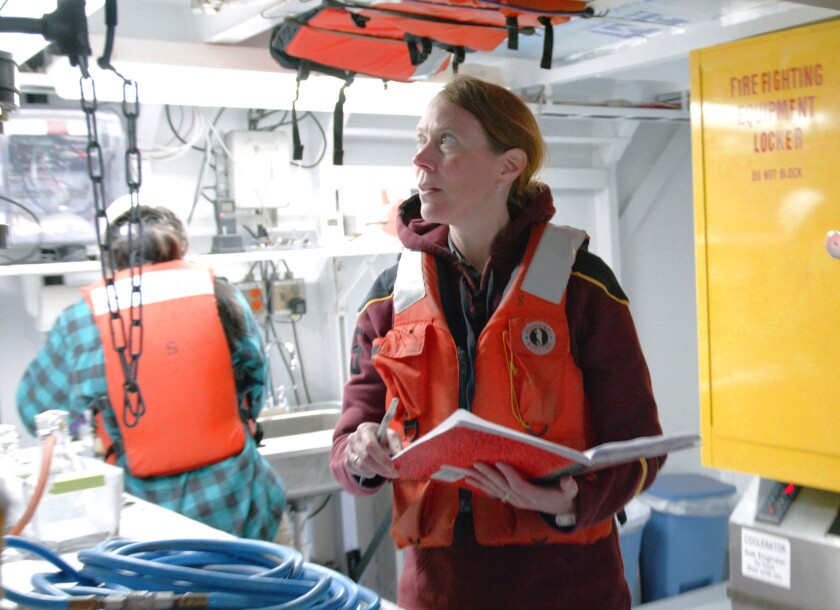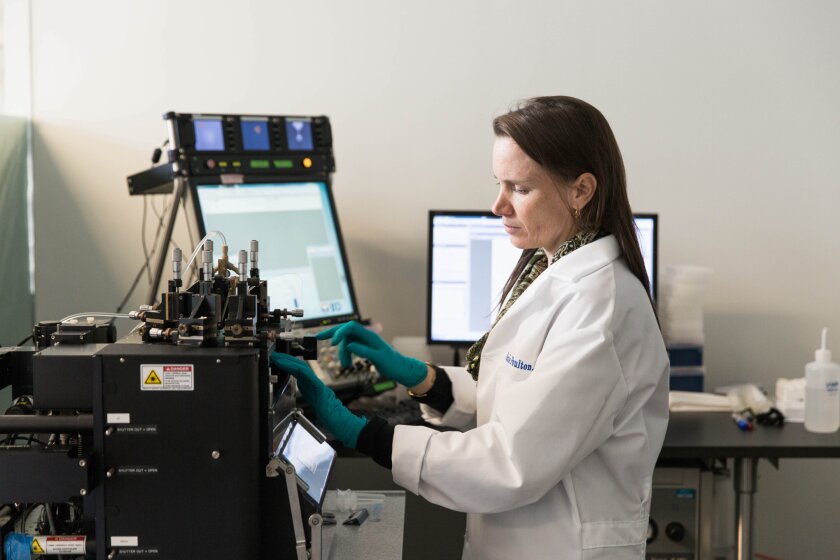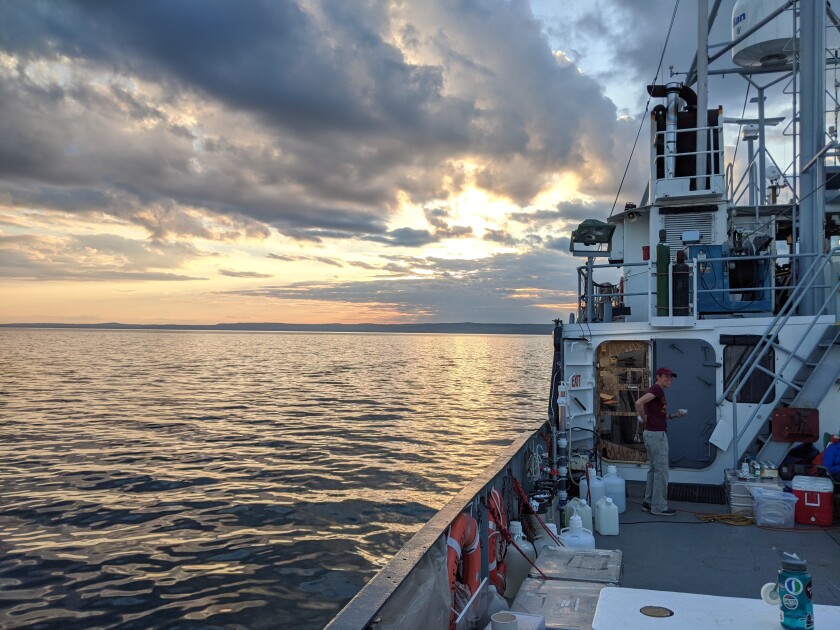DULUTH — It’s been known for years now that Lake Superior and many other waterways are loaded with plastic. It’s washing up on shore. It’s in the fish. It’s even been documented in tap water and in beer brewed around the region.
Some of that plastic started small, like the tiny beads in facial scrubs and other personal care products that washed down the drains and didn't get filtered out in treatment plants.
ADVERTISEMENT
Other plastic starts bigger — pop bottles, plastic bags, poly-fleece clothing and more — and wears down, breaking up and disintegrating until the particles or fibers are smaller than a grain of rice, many pieces just a fraction of the diameter of a human hair.

The tiniest of microplastic particles are the ones some scientists worry are being consumed by small living organisms like zooplankton, and which may be working their way up the food chain to fish and maybe even people.
The plastic pieces are so small, scientists note, that they could pass from the stomachs into the bloodstreams of living creatures and maybe even into their brains — everything from tiny organisms on up.
“If I chew off a piece of plastic straw and eat it, it's probably going to pass through my system and get pooped out because it’s pretty big. … But if the piece of plastic is so tiny that it can pass through the gut barrier and into our bloodstream, that’s what worries me,” said Elizabeth Minor, professor in the Swenson College of Science and Engineering and Large Lakes Observatory at the University of Minnesota Duluth.

Until recently, scientists had no good way to identify or count those tiniest of plastic pieces, no good way to distinguish them from bits of organic matter, confounding efforts to see what they were made of, what their origins were and what damage they may be doing.
The good news is that researchers at UMD, led by Minor, and others at the Bigelow Laboratory for Ocean Sciences in Maine, have developed a new approach to identify those tiny plastic bits — combining different specialized techniques — to classify and count plastic bits as small as 5 microns. (For comparison, a human hair is about 70 microns in diameter.)

The bad news is that, when they tested dozens of samples of Lake Superior water for the study, they found tiny plastic pieces in every single one — hundreds of tiny pieces in each liter of water taken from a half-dozen locations on the lake and in the St. Louis River Estuary.
ADVERTISEMENT
From each sample of Lake Superior water, researchers found between one and three large pieces of plastic per liter, the kind we already knew was there. But when they started counting the tiniest particles with their new system, they found 600-1,500 pieces in each liter of Lake Superior water taken from all the sites.
That means that, while most pieces are tiny, there are far more pieces of plastic floating around than previously known.
“The order of magnitude of how many more of the small pieces there were was surprising. Nobody knew if you couldn’t see them to count,” Minor said.

It’s not just the plastic bits themselves that are a problem. These small particles are often mixed with harmful chemicals and can even transport disease pathogens and pollutants.
“No one really knows the risk that these microplastics pose to fish or even people because we haven’t had any reliable way to count them or determine what they are made of,” Minor said. “Now, we might be able to push that risk assessment research farther along. … Finding out what dose level causes a health response.”
The study was published in a recent edition of the journal Limnology and Oceanography Methods.
"With this method, we're not just counting particles blindly or relying on mathematical models," said Nicole Poulton, Bigelow Laboratory senior research scientist and one of the study's co-authors, in a statement. "We're actually able to determine how much plastic is present and what those plastics are."
ADVERTISEMENT

The science stuff
In their new approach to identifying tiny microplastics, the researchers first processed the water samples to remove organic matter that could be confused for microplastic and infused the samples with a dye called Nile red that stains plastic.
They then use a flow cytometer to line up the microscopic particles and hit each with a laser — at a rate of 100s of particles per second — that causes the stained microplastics to light up, allowing the researchers to separate them out from the rest of the sample.
Flow cytometry is commonly used in the biomedical field, but Bigelow Laboratory's Center for Aquatic Cytometry, of which Poulton is the director, has played a critical role in expanding its use in environmental research.
For this study, the Bigelow researchers used the flow cytometer to isolate and measure individual microplastic particles and then sent them to UMD to be further analyzed. Minor's lab used pyrolysis gas chromatography mass spectrometry, or pyGCMS, a popular tool for determining the chemical composition and total weight of plastic samples.
After refining the method in the lab, the researchers tested it with natural samples of surface water from Lake Superior. They found that tiny particles — those in the 5- to 45-micrometer size range — were more abundant by several orders of magnitude than larger particles that could be easily measured with traditional methods. They also found both polyethylene and polypropylene, plastics that make up countless products from single-use plastic bags to textiles, an important first step for identifying sources of plastic pollution.
Plastics in bottled water
Researchers at Columbia and Rutgers universities recently used dual lasers and similar technology to find microplastics down to just 1 micron in size, and they discovered 110,000-400,000 bits of plastic per liter of bottled water they tested — several brands that had been purchased from Walmart — according to a study published in the Proceedings of the National Academy of Sciences.
ADVERTISEMENT
It’s believed most of the plastic particles came from the bottle itself and the filtering system used during the bottling process.













